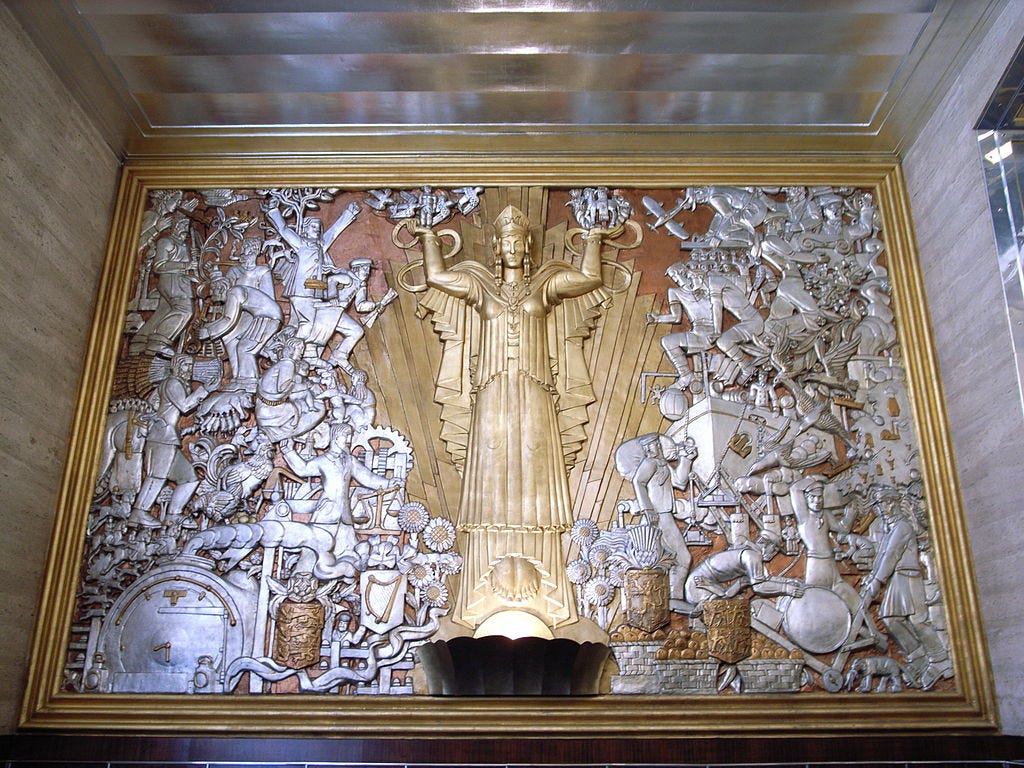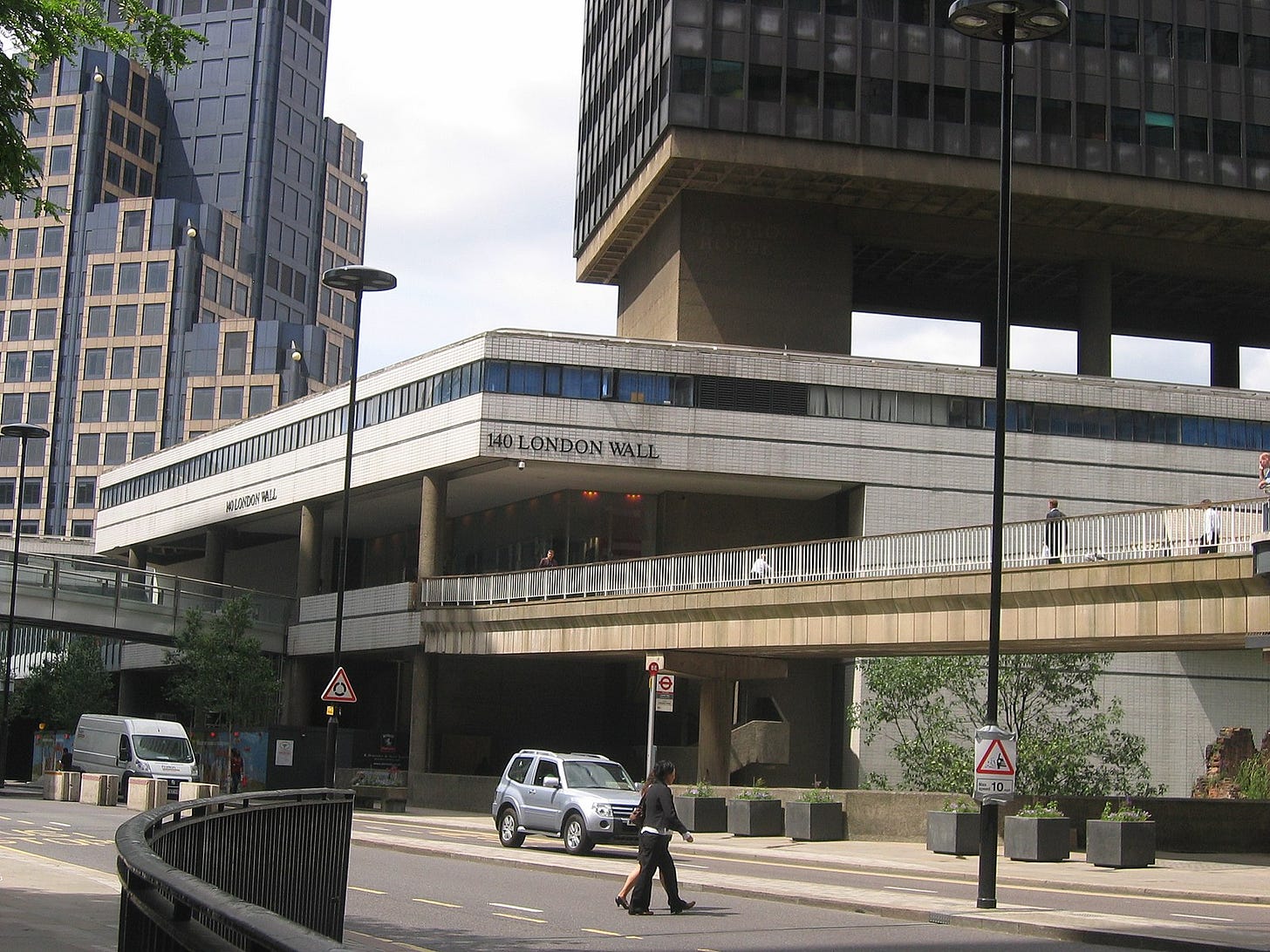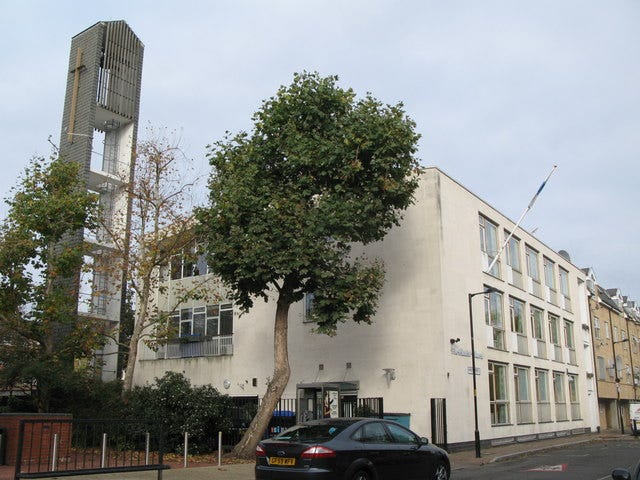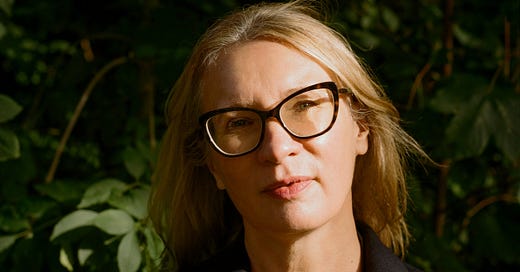'Where Do You Go?' with Helen Barrett
The journalist on the marvels of Modernism, cinnamon buns and going to the cinema alone
Every now and again we like to ask people for their personal take on London. We get them to tell us the places in the city that they turn to for different reasons: the spots that excite them, inspire them, make them feel calm, happy or just make them want to spend money. We call it ‘Where do you go?’.
This week it’s the turn of journalist Helen Barrett (above) who is getting ready to launch the London Modern cultural festival later this year.
Who are you?
I’m a journalist. I write about music, arts, design, architecture and modern life for publications like the Financial Times and the Spectator. And I’m co-director of London Modern, a cultural festival launching this year to celebrate the capital’s arts, design and architectural legacies of the mid-20th century.
And why should we trust you?
Perhaps you shouldn’t. I’m not a Londoner - I grew up in north-west England. But as a teenager in the 1980s, I spent every October half-term in London with my mum. We didn’t have much money, so we would mostly stick to free stuff, entertaining ourselves by trawling around galleries and museums, and walking around looking at buildings. Sometimes we would choose a bus and ride it to the end of the route, following along with the A-Z.
I’ve been here since 1994 and have lived all over, from Ladbroke Grove to Crystal Palace via Dagenham, Battersea and Camberwell. In all that time, I have never stopped doing those things. For all its flaws, London is still concentrated potential. That’s what makes it thrilling.
Later this year you are launching the London Modern festival. Where do you think your interest in Modernism comes from?
I used to edit the FT’s House & Home section, which is the part that is most concerned with architecture, so my journalism has often been around that world. It’s an era I’ve always admired because in London it’s largely associated with a period of optimism, post-war expansiveness and civic mindedness that many people feel is missing now.
There’s nostalgia for that era that translates into an affection for the aesthetic, especially as it’s particularly vulnerable. The people who are in position to decide what to knock down and what to keep tend to be in their 50s and 60s and they often see Modernism as cheap and prescriptive or ugly. While the people who do value it tend to be too young to be in positions where they can make decisions about what buildings we keep.
Is that part of what you want to do with the festival? To educate people about Modernism and shine a light on it?
Exactly. We are a not for profit organisation and we want to celebrate Modernism and bring it to a broader audience; to people who maybe admire it, but perhaps know a bit less about the broader context.
We were inspired by the Modernism Week that takes place every year in Palm Springs. They are also a charity, they started 16 years ago, and they went from being a symposium to a major event that is helping to conserve important buildings.
And we’re not just an architecture festival. We are a cultural festival. Of course architecture is at the heart of it, but we’re also about visual arts, music, literature drama…
Modernism is quite a broad term. Do you find it can be quite hard to pin down, unlike say something like Brutalism?
Modernism can be everything from Art Deco to Postmodernism and High Tech, which arguably wouldn’t exist without Modernism. You could even look at London’s millennium buildings like City Hall and and the Gherkin and say they’ve got elements of Modernism in them. It’s not a dead trend by any means. So we want to put it in context and bring it to life.

If people wanted to go and see some great examples of Modernist architecture in London where would you send them?
Start with the Daily Express building on Fleet Street. It’s a great example of earlier Modernism and while the building itself isn’t under threat there are plans for a huge development next to it, which could affect the streetscape and the visibility of that building.
Another one would be the Air France building on Piccadilly which is due to be demolished. but also around the back from that is the Dunhill shop, which is a beautiful building that’s probably going to be pulled down as well.
The third one would be the Museum of London and next to it Bastion house (below), the big modernist office block, which isn’t listed but is very elegant. That’s probably going be pulled down as well.

On to the usual questions... Where do you go to have a great time?
The Blue Posts on Berwick Street. Before I became a journalist I worked in advertising and spent a lot of time around Soho’s film and television post-production houses in the 1990s, at all times of day and night. There were - and still are - endless portals to exclusivity around there: members’ clubs and expensive restaurants and so on. They are entertaining, but they often feel temporary and assembled, like stage sets. The Blue Posts never changes and it welcomes everyone. The Fox & Hounds in Chelsea is similar, too.

Where do you go that can never close down, because if it does you might cry?
The Finnish Church in Rotherhithe on Albion Street (above), designed by Cyrill Mardall-Sjöström and built in 1958. From the outside it is plain, austere even, but inside, its modernist interiors are immaculate and appear to be untouched, though they have been renovated a bit. There is a courtyard cafe with delectable cinnamon buns, a Finnish shop selling salty liquorice, and even a sauna.
Where do you go to cheer yourself up?
I’m part of an informal, occasional walking club called Books and Booze. We choose a London writer, then put together a lunchtime-through-to-closing-time pub crawl based around their novels and old haunts. So far, it’s been Julian MacLaren-Ross in Fitzrovia and Patrick Hamilton in Earl’s Court. Next is WG Sebald.
Where do you go to be alone?
The Waterlink Way. It’s a walking and cycle path that runs from Croydon to Greenwich, mostly off-road and following the Ravensbourne. I pick it up at Kent House and follow it to Deptford, usually by bike. Its like ever-shifting scenery: industrial estates, old and new housing, parklands. I like how the wide paths are always rammed with toddlers and dogs.
Where do you go that’s within walking distance of your house?
Crystal Palace Park is a mysterious place, huge vistas littered with detritus from the burnt-out palace - staircases to nowhere, headless statues and so on. It was neglected for years, even after the National Sports Centre opened in 1964. There is a surreal British film, Pleasure Garden and the Phoenix Tower, made in 1952 starring Hattie Jacques and John le Mesurier. The plot is terrible, but the film gives a sense of how wild the parkland was in the decades after the fire. Parts of it still haven’t changed.
Where do you go when you can afford it?
Live music at the Barbican or the Royal Festival Hall. An elderly relative who lived in London told me that one of her biggest regrets was not seeing Ella Fitzgerald at the RFH in 1961 because the tickets were ever-so-slightly too expensive. I try to remember that, though the cost of live music is breathtaking.
Where do you go to feel comfortable?

Greenwich. It’s elegant, slouchy, slightly scruffy. The Oxfam bookshop, Joli Vintage and Casbah Records. I like the elegant naval pubs, too: the Trafalgar Tavern (above), and the Pelton Arms for live music. Just outside, the centre there is a footpath called Diamond Terrace, where mysterious, mid-century houses lurk behind high walls. I like to admire their roofs.
Where do you go if you want to switch off?
The cinema, alone and on a weekday. Mostly the Picture House in West Norwood, which is housed inside an extended and restored modernist library, the Curzon in Victoria or the BFI. They are all full of other people watching films on their own.
Where do you go to get inspired?
Sir John Soane’s museum or Sadler’s Wells (I’m a failed dancer).

Where do you go to think?
The Point in Blackheath (above). It’s a sliver of high-level parkland with views of the city, just off a quiet street, largely hidden from view and always deserted.
You can follow Helen on Instagram here and on Twitter here.
You can get updates on the London Modern festival via their Twitter account.
If you know of anyone that you think would make a good interview for our ‘Where do you go?’ series then let us know on Londoninbits@gmail.com.




